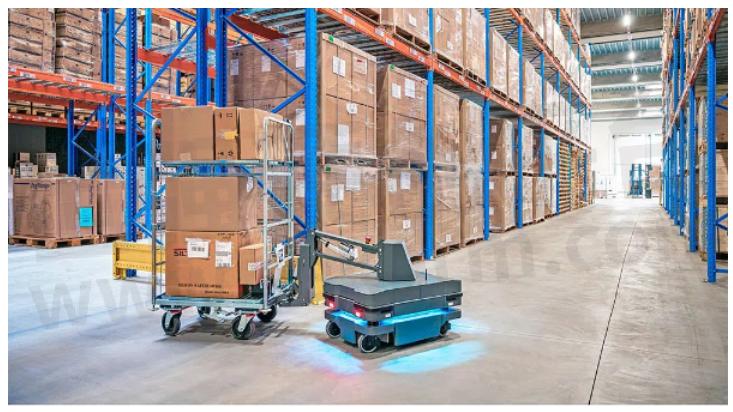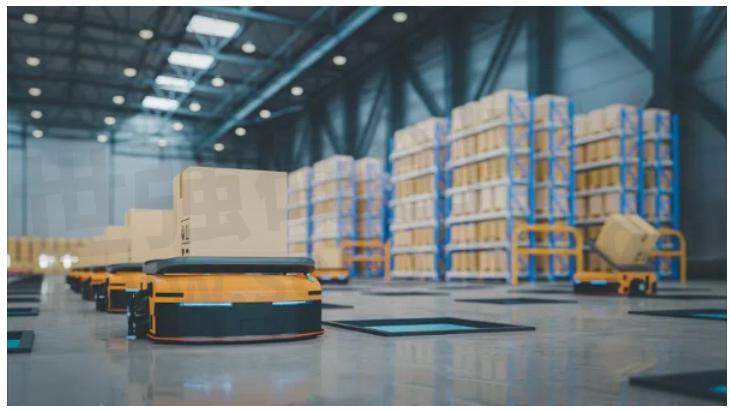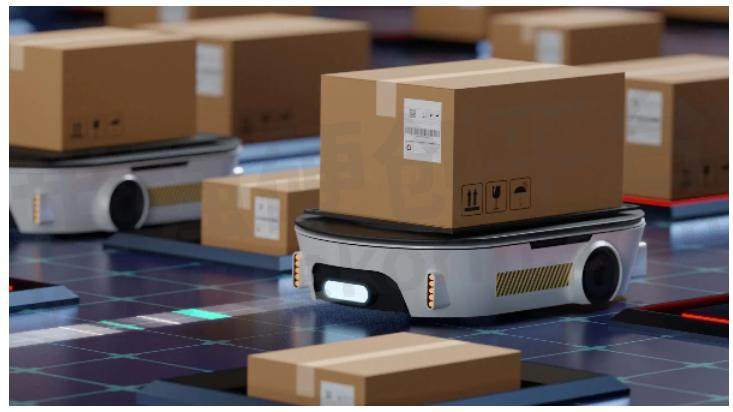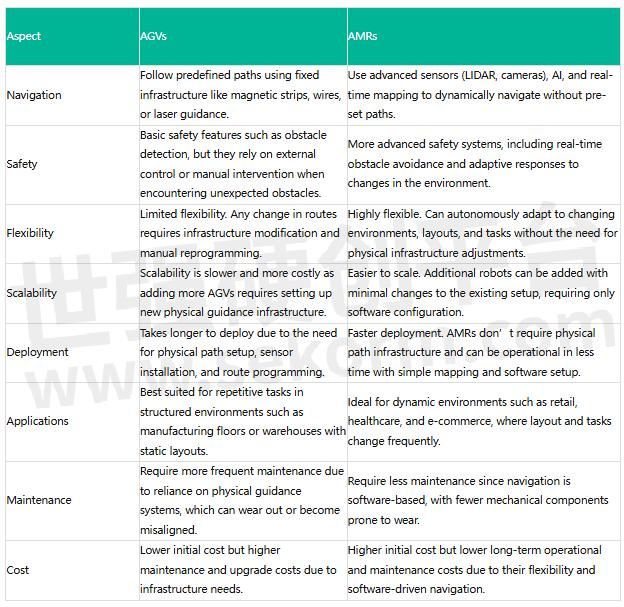What Batteries are Used for AGVs and AMRs?

The world of material handling and logistics has been transformed by automation, with Mobile Industrial Robots (MIRs) playing a pivotal role in improving efficiency. Two common types of MIRs are Automated Guided Vehicles (AGVs) and Autonomous Mobile Robots (AMRs). While both serve similar functions—transporting materials, assisting in warehouses, and enhancing workflows—they differ significantly in terms of navigation technology and autonomy. This article explores the differences between AGVs and AMRs, focusing on the types of batteries that power these innovative machines.
What is a Mobile Industrial Robot (MIR)?
Mobile Industrial Robots (MIRs) are self-driven vehicles that transport materials in industrial environments. They operate without human intervention, designed to autonomously navigate through warehouses, manufacturing facilities, or distribution centers. MIRs improve productivity, reduce the need for manual labor, and increase the overall efficiency of logistical operations. These robots are typically used in industries like manufacturing, logistics, and e-commerce, where the automation of tasks such as material transport is crucial for operational success.

MIRs can be divided into two primary categories based on their level of automation and flexibility:
●Automated Guided Vehicles (AGVs)
●Autonomous Mobile Robots (AMRs)
Both AGVs and AMRs serve similar roles but differ in terms of how they navigate, their capabilities, and the environments they are best suited for.
What is an AGV?
Automated Guided Vehicles (AGVs) are mobile robots that follow predefined paths in a controlled environment. These paths are typically set using magnetic strips, sensors, or lasers. AGVs are widely used in warehouses, factories, and distribution centers for transporting materials along fixed routes. They offer reliable, repeatable performance, making them ideal for structured environments where consistency is crucial. AGVs lack the ability to dynamically adapt to new obstacles or changes in their environment. This means that any deviation from their path, such as encountering an obstacle, could lead to a halt in operation until the obstacle is removed or the path is cleared.

How to Power AGVs?
AGVs rely on battery power for mobility, and the type of battery chosen can directly affect their performance, efficiency, and operational lifespan. Typically, AGVs use the following types of batteries:
Lead-Acid Batteries
Traditionally used in AGVs due to their low cost.
They offer reliable performance but have a shorter lifespan and require more maintenance, such as regular watering.
Slow charging times can result in increased downtime.
Lithium-Ion Batteries
Becoming the more popular choice due to their longer lifespan, faster charging times, and maintenance-free nature.
They can handle more charge-discharge cycles compared to lead-acid batteries.
Higher energy density allows for longer operation periods without recharging, improving efficiency.
Nickel-Cadmium (NiCd) Batteries
Less common but still used in some AGVs for applications requiring rugged, reliable performance in challenging conditions.
NiCd batteries are durable but suffer from a memory effect, reducing their long-term effectiveness.
What is an AMR?
Autonomous Mobile Robots (AMRs) are more advanced than AGVs, capable of navigating complex and dynamic environments without predefined paths. In contrast to AGVs, autonomous mobile robots move independently through their environment and act in real-time thanks to digital warehouse maps paired with cutting-edge sensors and AI that allow them to independently detect obstacles and avoid them. The increased autonomy of AMRs makes them more versatile than AGVs, allowing them to work in various industries, including retail, healthcare, and logistics.

How to Power AMRs?
Similar to AGVs, AMRs depend on rechargeable batteries for continuous operation. However, the demands of AMRs, such as higher computational needs and longer working hours, make energy efficiency and power longevity even more critical. The following battery types are typically used for AMRs:
Lithium-Ion Batteries
The most common choice for AMRs due to their high energy density, long operational life, and rapid charging capability.
They allow AMRs to operate for extended periods without downtime.
Maintenance-free, which makes them ideal for operations requiring 24/7 uptime.
Solid-State Batteries
A newer and emerging technology that promises higher energy density, longer life, and improved safety over traditional lithium-ion batteries.
While not widely adopted yet, solid-state batteries may become a future standard for powering AMRs as their technology matures.
Supercapacitors
Occasionally used alongside traditional batteries to provide quick bursts of energy, useful for robots that require rapid acceleration or energy-intensive operations.
While not a primary power source, they complement batteries to improve the overall performance and efficiency of AMRs.
AGVs vs AMRs: What's the Difference?
Usually, AGVs are more suited for environments with structured, repetitive tasks where consistency is key, but they come with limitations in terms of flexibility and scalability. However, AMRs excel in dynamic environments where adaptability, faster deployment, and future scalability are essential, making them the more flexible but costlier option initially. Here’s a comparison table that highlights the differences between AGVs and AMRs across six key aspects:

What Batteries Are Used for AGVs and AMRs?
Both AGVs and AMRs rely on rechargeable batteries to power their movement, sensors, and other functionalities. While traditional lead-acid batteries were once the standard for AGVs, the industry is rapidly shifting toward lithium-ion batteries due to their superior energy density, faster charging times, and longer lifespans.
For AMRs, lithium-ion batteries remain the most popular choice due to their high energy demands and the need for extended operational times. The emerging technology of solid-state batteries may also soon play a key role in powering AMRs, offering higher efficiency and safety.
Ultimately, the choice of battery depends on the specific application, cost considerations, and the operational demands of the robot. However, as technology advances, both AGVs and AMRs are moving towards more energy-efficient, sustainable, and long-lasting power solutions, driving the future of automation in material handling.
Conclusion
AGVs and AMRs represent the future of automation in logistics and manufacturing. With AGVs offering structured, reliable performance and AMRs delivering flexibility and autonomy, these mobile industrial robots are revolutionizing the way materials are handled. The choice of battery plays a crucial role in their performance, and as the industry evolves, we can expect to see further innovations in battery technology that will enhance the capabilities of both AGVs and AMRs. As a global leading lipo battery manufacturer, Grepow offers high-energy-density semi-solid state batteries and lipo batteries that perfectly meet the needs of AGVs and AMRs. If you have any questions or needs, please feel free to contact us at info@grepow.com.
- +1 Like
- Add to Favorites
Recommend
- What Is a Semi-Solid State Battery?
- Small LiPo Batteries: from Types to Applications
- Introduction to L Shaped Batteries
- Omnergy brand CR Series Button Batteries Have Low Self-discharge Characteristics and Can Be Stored for A Long Time to Reduce Power Loss
- What are the Characteristics and Application Fields of Button Batteries?
- Can Lithium Batteries and Lead Acid Batteries be Used Together?
- Lijia CR123A Lithium Manganese Cylindrical Batteries with the Single Battery Rated Voltage of 3V
- Supercapacitors vs. Batteries: A Comparison in Energy Storage Solutions
This document is provided by Sekorm Platform for VIP exclusive service. The copyright is owned by Sekorm. Without authorization, any medias, websites or individual are not allowed to reprint. When authorizing the reprint, the link of www.sekorm.com must be indicated.





























































































































































































































































































































































































































































































































































































































































































































































































































































































